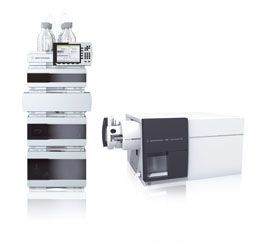The New Agilent 6490 Triple Quadrupole LC/MS - Clearly Better from A to Z
The new 6490 LC/MS provides the highest level of sensitivity for a wide range of critical applications such as environmental, food testing, and pharmaceutical analyses.

From attogram limits of quantitation to zeptomole sensitivity, the new Agilent 6490 Triple Quadrupole LC/MS delivers unprecedented analytical performance for your most rigorous, regulated assays. But that’s just the beginning. The Agilent 6490 LC/MS is a truly comprehensive solution, from A to Z.
Advanced iFunnel technology revolutionizes atmospheric sampling and helps reduce detection limits to an all-time low
Unmatched acquisition and data analysis speed lets you take full advantage of the super-fast separations provided by Agilent’s 1290 Infinity LC
The industry’s most advanced MRM software enables fast, accurate LC/MS analysis of complex samples—ideal for large, multi-analyte assays from fast LC separations
Maximum uptime and simplified operation boost your lab’s productivity
Seamless integration with Agilent HPLC-Chip/MS provides ultrasensitive quantitation of small volume samples
Learn more about the industry-leading sensitivity of the 6490 Triple Quadrupole LC/MS - get a FREE iFunnel Kit, including “The Ion Funnel: Theory, Implementations, and Applications,” plus additional literature. Visit www.agilent.com/chem/atoz

Characterizing Plant Polysaccharides Using Size-Exclusion Chromatography
April 4th 2025With green chemistry becoming more standardized, Leena Pitkänen of Aalto University analyzed how useful size-exclusion chromatography (SEC) and asymmetric flow field-flow fractionation (AF4) could be in characterizing plant polysaccharides.
Investigating the Protective Effects of Frankincense Oil on Wound Healing with GC–MS
April 2nd 2025Frankincense essential oil is known for its anti-inflammatory, antioxidant, and therapeutic properties. A recent study investigated the protective effects of the oil in an excision wound model in rats, focusing on oxidative stress reduction, inflammatory cytokine modulation, and caspase-3 regulation; chemical composition of the oil was analyzed using gas chromatography–mass spectrometry (GC–MS).




